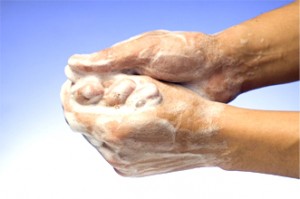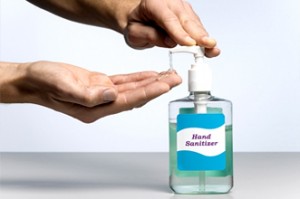6 Tips for Smart Handwashing
Handwashing is the single best way to prevent colds and many other infectious diseases—as long as you do it right. Soap and water, along with the friction of rubbing your hands together, loosens dirt and creates a slippery surface so germs slide off.
You should wash your hands often, before and after eating or preparing food (particularly raw meat, fish, and eggs), after using the toilet, after blowing your nose, after changing a diaper, after playing with pets or cleaning up their waste, before and after touching someone who is sick or treating a wound, before putting in contact lenses, and after gardening.

How long should it take you to wash your hands?
If you follow recommendations from the Centers for Disease Control and Prevention (CDC), you’re supposed to lather up and rub all surfaces of your hands together for 20 seconds—the time it takes to sing “Happy Birthday” twice. According to the World Health Organization, the whole process, from washing to drying your hands, should take 40 to 60 seconds.
Does the water temperature matter?
There’s little research, but two studies suggest that water temperature has no significant effect on reducing bacteria under normal handwashing conditions. A downside to hot water is that it can irritate skin. Hotter water does cut through oil on your hands faster, but cooler water will also do the job.
How should you dry your hands?
Drying your hands reduces bacteria levels further, but it’s debatable whether using paper or cloth towels or a warm-air dryer is best. A study from the Mayo Clinic in 2000 found no differences between these methods in terms of removing bacteria from hands; other research suggests paper towels are more effective. If you use a dryer, keeping your hands still removes more bacteria than rubbing them together.
The new ultra-rapid dryer, the Airblade, is an efficient way to dry your hands: According to a recent study funded by the manufacturer, it removes as much bacteria in 10 seconds as a conventional dryer does in 30 seconds. Whichever method you use, the key is to make sure your hands are fully dry—hands that remain wet are more likely to transfer bacteria to and from the next surface you touch.
Is hand sanitizer a good substitute?
Handwashing is generally preferable, but alcohol-based hand sanitizers are a convenient option when soap and water are not available. They kill most bacteria and viruses on contact, but not bacterial spores. Look for products with at least 60 percent alcohol (ethanol and/or isopropanol).
Dirt, food and other grime on your hands make the alcohol in hand sanitizers less effective, however, so if your hands are visibly dirty or greasy, you’re better off washing them. Handwashing is also recommended instead of sanitizers after going to the bathroom and before and after handling food. If you use a hand sanitizer gel, rub about a ten cent-size amount over all the surfaces of your fingers and hands until they are dry.

What about antibacterial soaps?
We don’t recommend them for ordinary household use. Soaps that contain antibacterial agents (most commonly, triclosan) kill or inhibit bacteria, as well as help physically remove them. But there’s concern that such soaps contribute to the growing problem of bacterial resistance, which is causing many essential antibiotics to become ineffective.
Also, though triclosan is not known to be hazardous to humans, the Food and Drug Administration (FDA) is reviewing its safety because studies in lab animals have shown it to have hormone-disrupting effects. Regular soap and water are all you need.
If you would like to find out more about adult acne, please look at the skin clinic pages on the website or email me a message on the Contacts page.
